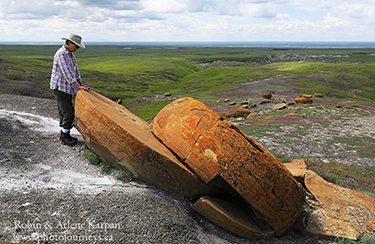
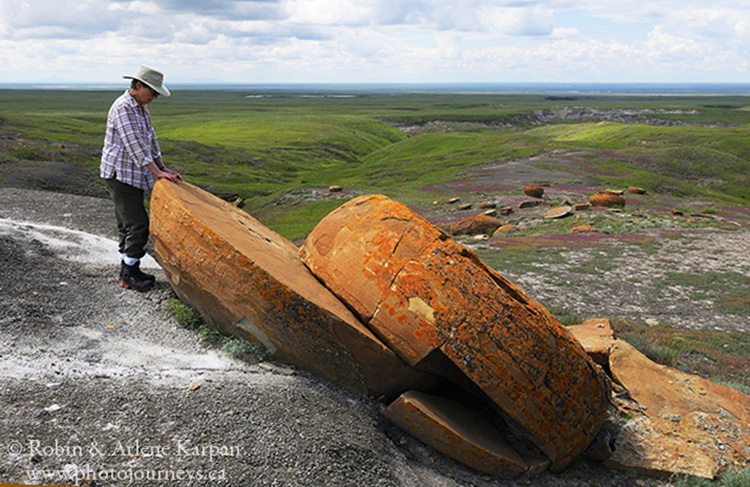
Standing on the valley rim, we peer into a rugged coulee of badland formations. Between the eroded slopes, native prairie covers the undulating treeless landscape where wildflower blossoms vie for space among the needle-and-thread grass, sagebrush and junipers.
What really grabs our attention is the sea of scattered curling rock-shaped boulders, most a dazzling reddish-orange. Many are massive, up to 2.5 metres across, and are thought to be some of the largest of their kind anywhere in the world. Remarkably, these strange rocks got so big by growing.
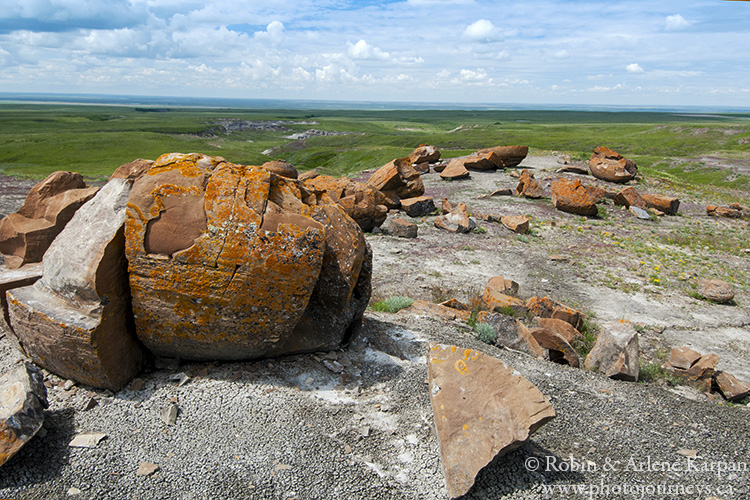
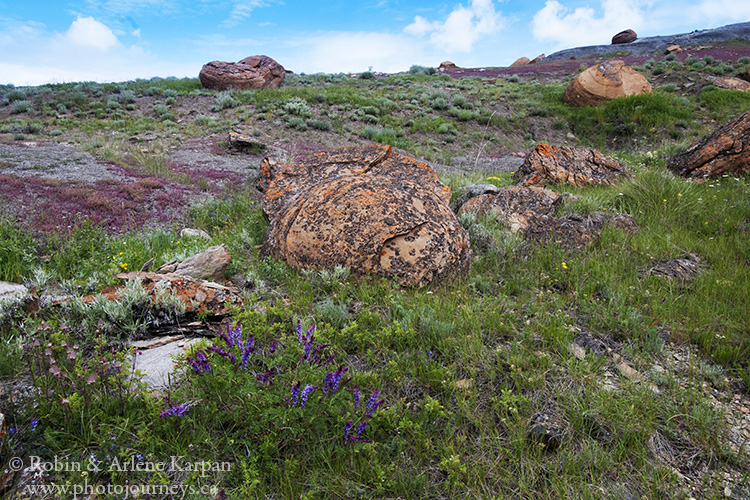
Red Rock Coulee Natural Area lies hidden in southeastern Alberta, about 50 kilometres from Medicine Hat. Covering 800 acres, the crown land is designated as a natural area by Alberta Parks. This is a low key park, with a parking area, some basic signage and little else for facilities. Though a geological wonder and a scenic gem, Red Rock Coulee isn’t widely known and doesn’t get a lot of visitors. Don’t be surprised if you have the whole place to yourself.
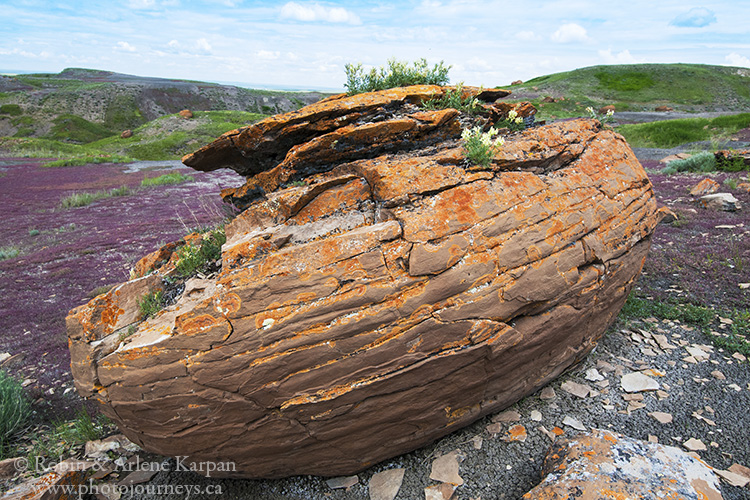
How the Boulders were Formed
The round boulders are concretions, formed millions of years ago when sand, calcite and iron oxide formed and hardened around small nuclei such as leaves or bones. Over time, swirling water added more deposits, which stuck to the formations and made them larger, like layers on an onion. The resulting boulders became harder than the surrounding material, so when erosion carved the coulee, the softer material washed away, leaving the red rocks exposed.
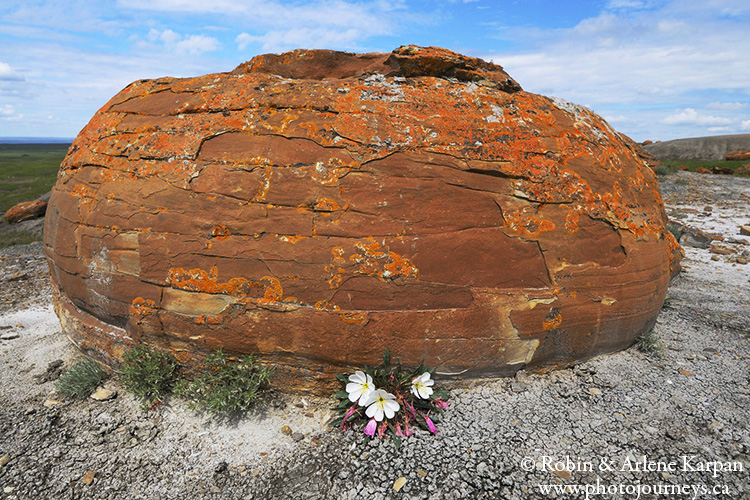
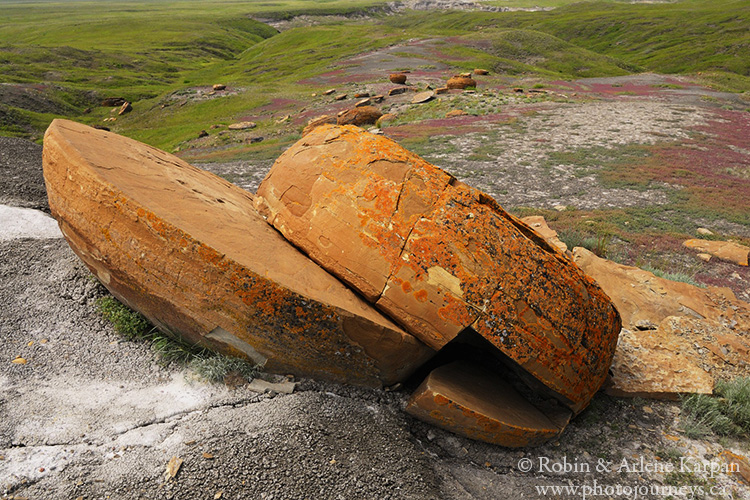
Torrents of water from retreating glaciers pushed some of the monsters down to the valley floor, while leaving others along the slope. It’s as if a giant stood on the valley rim and tossed a large handful of marbles over the edge, some remaining intact and rolling to the bottom while others shattered on their way down.
Walking into the valley is like entering another world or stepping onto the surface of the moon or Mars. While rock-strewn coulees are not uncommon, this one is eerily different because of the consistent shape of many boulders, their sizes and brilliant colour. Several are almost perfectly round, but flattened on the top and bottom, like curling rocks or hamburger buns. Concretions have formed in many parts of the world, but the ones here are considered some of the biggest anywhere and among the most flashy.
Many rocks have cracked open, some of the breaks so straight that they seem to have been cut by a precision instrument. Inside, we can sometimes see concentric circles, somewhat like the growth rings on a tree trunk. The colour goes right through the rock, caused by iron oxide that was part of the rock formation. The surface of many boulders is further enhanced by wildly colourful lichens.
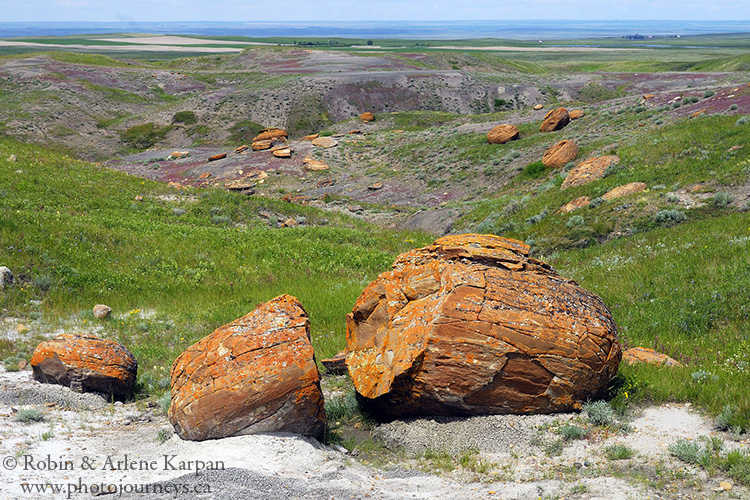
Prairie Plants and Wildlife
While the unique rocks are the main feature of the coulee, this is also an oasis of relatively undisturbed natural prairie. It’s a great spot for wildflowers such as crocus in the spring and a variety of blooms through the summer like prickly pear and pincushion cactus. A specialty is gumbo evening primrose, which likes to grow on almost bare patches of clay. Grassland birds such as meadowlark, horned lark and prairie falcon are often around. This is also rattlesnake country so be careful stepping over rocks or walking through tall grass.
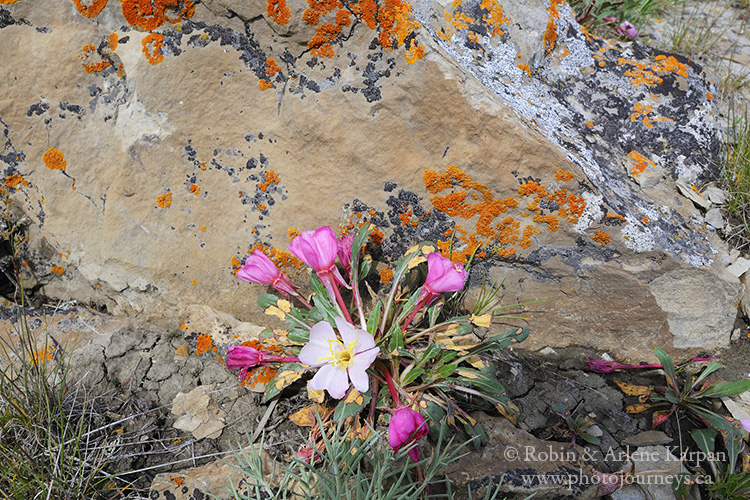
To get there, head southwest of Medicine Hat on Highway 3 to Seven Persons, then travel south on Highway 887 for about 26 kilometres to where the highway turns east. A sign near the curve directs you to a short access road to the site.
For details and suggestions of other attraction in southeast Alberta, see the Canadian Badlands website www.canadianbadlands.com


Wow, you really add life to this otherwise “out-of-this-world” landscape with the wild flowers.
In which month was the photo taken? We visited there last September and I see mostly cactus. Thinking of going again this May.
Thanks Victor. We’re glad that you enjoyed the post. We visited in August, and caught some of the wildflowers while they were still blooming. This place is so unreal and special that we’re sure you could visit any time of year and never be disappointed. We found that late afternoon and evening before sunset really made the colours on the rocks pop out. Enjoy your travels.